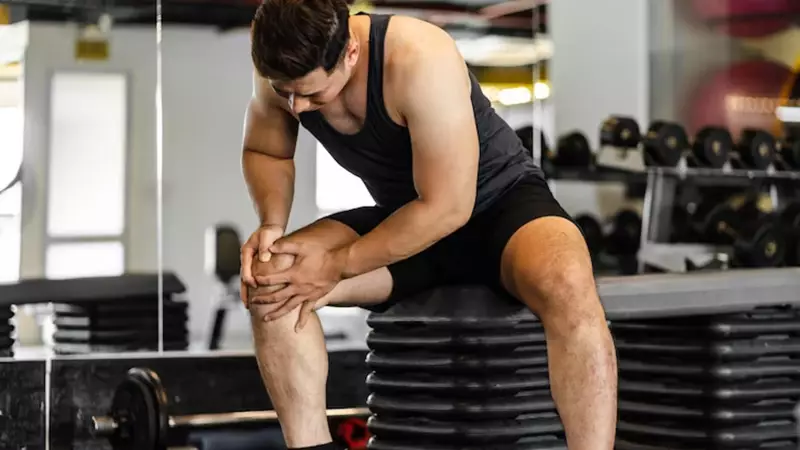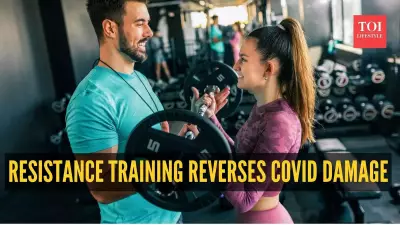
Your daily gym session, often seen as a badge of honour and discipline, could be secretly setting you up for a lifetime of joint pain and mobility issues. Pushing harder every day is not always synonymous with progress; sometimes, it's a fast track to chronic injury.
The 8 Joint-Wrecking Gym Mistakes
This stark warning comes from Alex, a trainer certified by the National Academy of Sports Medicine (NASM). In a recent Instagram video that has gone viral, he outlined eight common workout blunders that have the potential to "wreck your joints long before you hit 30." He dismisses the notion that overtraining is the primary culprit, stating instead, "It's not overtraining that ruins lifters. It's doing dumb stuff for too long and calling it 'hard work'. Some lifts build muscle. Others build hospital visits."
Alex breaks down specific exercises that, while feeling powerful or looking impressive, are silently harmful. Here are the key mistakes to avoid:
1. Upright Rows: This exercise might feel effective initially, but Alex warns it's a ticking time bomb. "Until your shoulders start clicking every time you reach overhead," he says, highlighting that the internal rotation of the shoulder under heavy load is a "recipe for disaster."
2. Bench Press with Flared Elbows: A common sight in many gyms, this form is a major red flag. Alex's advice is blunt: "Stop flaring your elbows out like a chicken. You're not hitting more chest, you're tearing up your shoulders. Tuck your elbows, set your back, and control the damn bar."
3. Behind-the-Neck Press: Often perceived as an advanced move, this exercise offers "no real benefits at all," according to the expert. He explains, "Your shoulders aren't meant to move that way. Keep the bar in front and you'll actually be able to lift long-term."
4. Smith Machine Squats: While the fixed path of the Smith machine appears stable and safe, it is deceptively dangerous. Alex notes that it "puts serious strain on your knees," adding, "that fixed bar path might look clean, but your knees hate you for it."
Ego Lifting and Poor Form
Alex also calls out exercises driven more by ego than proper technique.
5. Heavy Good Mornings: If you feel this in your lower back, you're doing it wrong. "You're not 'feeling your hamstrings'. You're rounding your spine and praying it doesn't pop," he cautions.
6. Kipping Pull-Ups: This CrossFit favourite gets a critical review. "You're not doing pull-ups, you're just fighting gravity with terrible form," Alex remarks, pointing out the immense stress it places on the shoulder joints.
7. Incorrect Leg Press: Using your hands to push your knees and finish a rep is a clear sign of trouble. His quip is a direct warning: "If you need to use your arms to finish a leg press rep, your weights are far too heavy."
8. Shrugs with Poor Posture: Performing shrugs with rolled shoulders and a forward head posture places undue stress on the neck and upper spine, negating any potential benefits.
What Actually Happens to Your Joints?
But what is the physiological impact of these incorrect movements? Sadhna Singh, a senior fitness and lifestyle consultant at HereNow Official, explains the science behind the damage.
Regarding exercises like the upright row, she states, "When these movements are done incorrectly, they force the shoulder into extreme internal rotation, which compresses the rotator cuff tendons and irritates the shoulder joint capsule. Over time, this can lead to impingement or even small tears that become chronic pain issues."
She recommends safer alternatives to build similar strength, such as lateral raises, front raises, or standard overhead presses, where the shoulder moves in a more natural, anatomically correct range of motion. "The goal should be to strengthen through alignment, not by forcing the joint into angles it's not designed for," she advises.
Elaborating on the critical importance of elbow positioning in presses, Singh notes, "Elbow positioning directly determines how the shoulder joint bears load. When elbows flare out, the upper arm rotates internally, which puts unnecessary stress on the shoulder capsule and pectoral tendon. By keeping the elbows tucked slightly inward, you allow the shoulder blades to move freely and stabilise the lift better."
Challenging Workout vs. Cumulative Joint Stress
So, how can a fitness enthusiast tell the difference between a productive, challenging session and one that is causing silent, long-term damage?
The key lies in understanding the type of discomfort. A workout should challenge the muscle, not the joint. Muscular fatigue feels like a deep burn or ache that subsides with rest. In contrast, joint stress manifests as a sharp, deep, or lingering pain that persists the next day.
Sadhna Singh concludes with a crucial piece of wisdom for all gym-goers: "The mistake many make is confusing 'no pain, no gain' with progress. Cumulative joint stress often builds silently through poor alignment and ego lifting. To prevent that, focus on controlled movement, steady tempo, and quality over quantity. Your joints should feel stable, not sore, after a good session."
The message from fitness experts is clear: train smart, prioritise form over weight, and listen to your body. It's the only way to ensure your fitness journey is sustainable and doesn't end in a surgeon's office.





